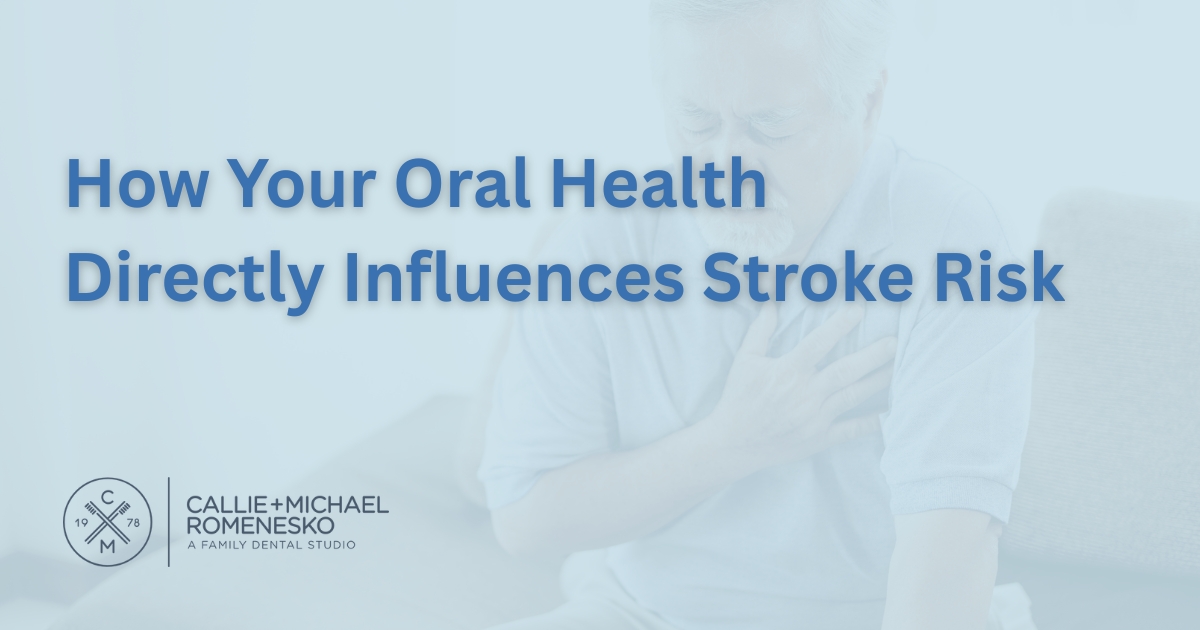More Than Just a Pretty Smile: How Your Oral Health Directly Influences Stroke Risk
Smile With Confidence Again

It might seem like a leap, but the journey from an unhealthy mouth to an increased risk of stroke is alarmingly direct. Periodontal disease, or gum disease, isn't just a problem for your teeth; it's a chronic bacterial infection that unleashes processes with far-reaching consequences, extending directly to your brain's vascular health.
Here's how the state of your gums becomes a critical factor in your stroke risk profile:
- The Body's Inflammatory Cascade – Sparked in Your Mouth: Gum disease means your gums are in a constant state of inflammation, fighting off a persistent bacterial siege. This localized inflammation doesn't stay put. It triggers a wider, systemic inflammatory response throughout your body. This chronic, body-wide inflammation is a well-established instigator of atherosclerosis – the dangerous process where plaque builds up inside your arteries, making them narrower and less flexible. When this plaque accumulation affects the arteries supplying blood to the brain, or when plaque fragments break loose and travel there, your stroke risk significantly elevates. Essentially, an inflamed mouth continuously fuels the arterial damage that can lead to a stroke.
- Oral Bacteria: Unwanted Travelers in Your Bloodstream: The barrier between your gums and your bloodstream can be compromised by gum disease. This allows the very bacteria causing the infection in your mouth to escape into your circulation. Once these oral bacteria are in your bloodstream, they can contribute directly to the formation of blood clots. Should one of these clots lodge in an artery within the brain, it can block blood flow, starving brain cells of oxygen and triggering an ischemic stroke – the most common type. Your mouth, in this scenario, becomes an entry point for agents that can directly obstruct crucial blood supply to the brain.
This isn't a vague or minor concern. A wealth of scientific research now clearly demonstrates that individuals with moderate to severe periodontal disease often face a considerably higher risk of stroke compared to those with healthy gums. The connection is tangible and highlights why your oral health is a crucial, modifiable risk factor for stroke.
Are You Getting the Right Dental Cleaning? Why It Matters for Stroke Prevention
Understanding this direct oral-systemic link makes your regular dental visits even more crucial. However, not all dental cleanings are created equal, and receiving the right type of cleaning is paramount, especially if gum disease is present. This is where understanding the difference between a "prophy" and "periodontal maintenance" becomes vital for your overall health strategy.
- Dental Prophylaxis (Prophy): The Preventive Shield for Healthy Mouths. This is the standard cleaning most people are familiar with. A prophy is designed for individuals with generally healthy gums. Its primary aim is prevention – to remove plaque, tartar, and stains from above the gumline to stop gum disease before it starts or to manage very early-stage gingivitis. If your mouth is already healthy, a prophy every six months helps keep it that way.
- Periodontal Maintenance: Essential Therapy for Diseased Gums. This is a therapeutic cleaning specifically for patients who have been diagnosed and previously treated for periodontal disease (like periodontitis, the more advanced stage). This isn't just about preventing future problems; it's about actively managing an existing chronic infection to stop its progression and reduce the associated inflammation.
- Going Deeper: Unlike a prophy, periodontal maintenance cleans both above and significantly below the gumline, targeting the periodontal pockets where harmful bacteria thrive. This is crucial for reducing the bacterial load and inflammation that can impact your stroke risk.
- More Frequent, More Vigilant: These appointments are usually scheduled more often, typically every three to four months. This frequency is necessary because the bacteria implicated in gum disease are aggressive and can quickly recolonize, reigniting inflammation if not consistently disrupted.
- Constant Monitoring: Each periodontal maintenance visit includes a thorough assessment of your gum health to catch any renewed disease activity early.
The Critical Distinction for Your Health
If you have active gum disease, a standard prophy is insufficient. It doesn't address the infection lurking below the gumline, meaning the inflammation and bacteria – those key contributors to increased stroke risk – remain largely unchecked. Opting for or only receiving a prophy when periodontal maintenance is needed is like trying to put out a house fire with a squirt gun. You're not addressing the root cause.
Take Control This National Stroke Month (and Beyond):
- Elevate Your Oral Hygiene: Make diligent brushing (twice daily) and flossing (daily) non-negotiable.
- Commit to Dental Check-ups: Don't let these appointments slide. Early detection and appropriate treatment of gum disease are key.
- Clarify Your Care: Actively ask your dentist or hygienist whether you are receiving a prophy or periodontal maintenance and why. Ensure your treatment aligns with your actual gum health status.
- Holistic Health Discussion: Talk to your doctor and your dentist about your risk factors for both stroke and periodontal disease. They can help you create a comprehensive prevention plan.
- Recognize Stroke Symptoms Instantly (F.A.S.T.):
- Face Drooping: Does one side of the face droop or is it numb? Ask the person to smile.
- Arm Weakness: Is one arm weak or numb? Ask the person to raise both arms. Does one arm drift downward?
- Speech Difficulty: Is speech slurred? Are they unable to speak or hard to understand?
- Time to call emergency services immediately if you see any of these signs.
This May, empower yourself with the knowledge that a healthy mouth is a vital component of a healthy brain. By diligently caring for your gums and ensuring you receive the correct type of dental care, you're taking a powerful, proactive step in reducing your stroke risk. Your smile holds more power than you know.